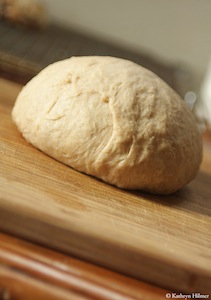I’ve been way into baking bread lately. Once a week on my day off, it goes something like this: wake up, throw a loaf of bread together, and let it rise while I shower and get ready for the day. Deflate the dough for a second rise and have a fresh loaf by the afternoon. We go through about a loaf a week, and I’ve been conducting careful weekly experiments in the hopes of perfecting the recipe for a whole wheat bread.
[jj-ngg-jquery-slider gallery=”Kate_Bread” width=”600″ height=”400″ center=”1″ tags=”Kate_Bread” order=”sortorder” effect=”fade” pausetime=”3000″ controlNav=”true” directionNav=”true” captionOpacity=”0.5″ ]
I started with a very basic loaf, and kept upping the ratio of wheat flour to white. Because I read that gluten flour gives your bread a nice texture and allows it to rise when you have higher amounts of wheat flour, I’ve been using gluten flour in my recipes too. We turned out a perfect light wheat loaf with 2 cups of wheat, 1 cup of white flour, and ½ cup of gluten flour. But when I tried a loaf with 3 cups wheat and ½ cup gluten (omitting the white completely), the thing was so dense it hardly rose much.
It took all day to rise and was much smaller than I’d intended, but it still baked into a lovely loaf. And I liked the tangy, sort of bitterness that the whole wheat bread had. The subtle flavors were delicious with butter and honey. I just needed it to have a little more volume.
In my research, I couldn’t help noticing that so many of the recipes online for whole wheat bread call for about ¼ cup of dry milk powder. But I hesitated to use it because of the high price. I have some in my cupboard, a bag of Organic Valley milk powder that I splurged on the other day when I wanted to make homemade pudding.
But I don’t make pudding every week, while homemade bread has definitely become a standard in our kitchen. I’d go through the bag pretty quick if I used ¼ cup in each recipe. And I did the math… a cup of dry milk powder costs me $2.40! It may be one way to get a perfect whole wheat bread, but I’m convinced that there are other, cheaper alternatives.
This morning I had another go at it. Again I aimed to use no white flour and no dry milk in the recipe. Instead, I used a combination of techniques that are said to help leaven the bread and strengthen the gluten. I added an egg, some vinegar in the milk for a little acidity, and some instant potato flakes. Now, I’m not usually one to buy instant anything (also partly why I hesitated to use milk powder) but I found the flakes in bulk and they were very cheap. They’re organic too, so how could I argue? Perhaps “instant” needn’t always mean “packed with preservatives.”
This morning I put these modifications to the test. This time, the bread rose quite a bit – and fast! It turned out almost just like the first loaf I had made, but a tad darker and more wheaty. It’s a very fluffy bread, good for sandwiches and toast.
I wish I could tell you that all this home bread-making has saved me a ton of money. I heard of a woman who saved a lot of money by making her own bread. I wanted to prove it to myself too. And I’ve waded through the calculations. You can get a decent loaf of bread for $2 to $3 in the store. You can make yourself a better loaf of bread for $2 to $3 dollars at home. My basic loaf cost about $2.50 and was made with local and organic ingredients. It will take you a little more time; you’ll save on packaging.
Personally, I like kneading bread. It’s meditative… it makes your apartment smell good. Plus, you get the credit. You get the satisfaction of self-sufficiency. And really, there is nothing quite so wonderful as a slice of warm, fresh-baked bread with butter and honey. That’s something you’ll never get from a store-bought loaf.


This bread looks fantastic. I agree that kneading bread is therapeutic. I love the smell, feel and taste that it produces.